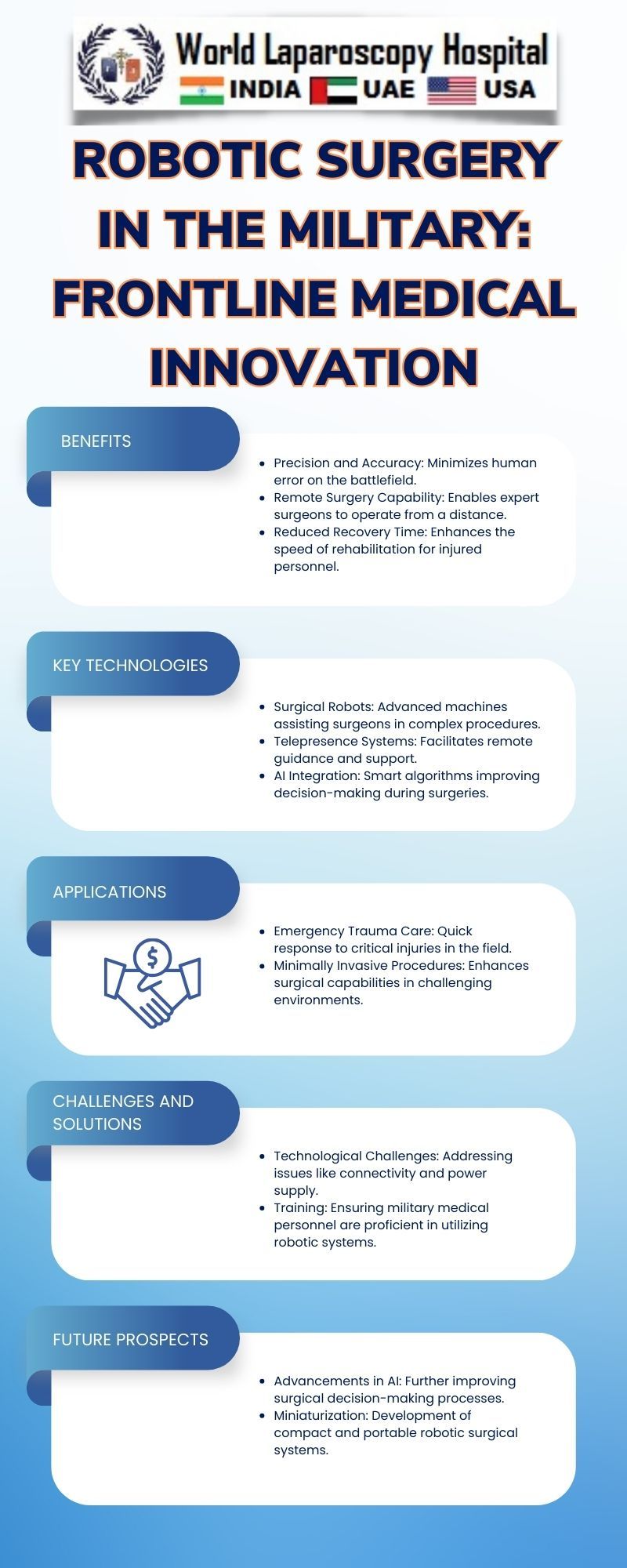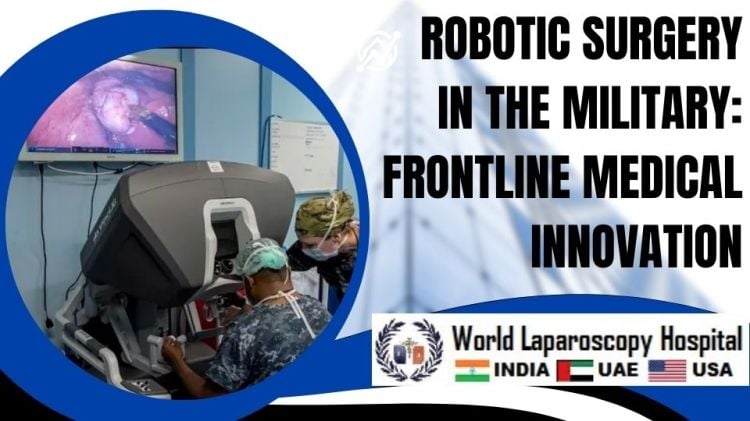Robotic Surgery in the Military: Frontline Medical Innovation
Introduction
In the dynamic landscape of modern warfare, technological advancements play a pivotal role in enhancing military capabilities. One such groundbreaking innovation is robotic surgery, a transformative development in frontline medical practices. This article explores the integration of robotic surgery in military healthcare, delving into its applications, benefits, challenges, and the profound impact it has on the overall well-being of military personnel.

The Evolution of Robotic Surgery
The roots of robotic surgery can be traced back to the early 1980s when the first robotic-assisted surgery was performed. Over the years, this technology has evolved significantly, finding applications in various fields, including military medicine. The adaptation of robotic surgery in the military represents a strategic response to the unique challenges posed by combat zones, where rapid and precise medical interventions are crucial for saving lives.
Applications in Combat Medicine
Robotic surgery has proven to be a game-changer in combat medicine, offering a wide array of applications. One of its primary uses is in trauma surgery, where the speed and precision of robotic systems can be life-saving. For instance, in the immediate aftermath of an explosion or combat engagement, quick and accurate surgical procedures are essential to stabilize wounded soldiers and increase the chances of survival.
Furthermore, robotic surgery is employed in the treatment of injuries that are challenging to access manually. The dexterity and maneuverability of robotic arms enable surgeons to navigate complex anatomical structures with unparalleled precision, facilitating delicate procedures in environments where traditional surgical approaches may be limited.
Advantages of Robotic Surgery on the Frontlines
Minimally Invasive Procedures
One of the key advantages of robotic surgery is its ability to perform minimally invasive procedures. In military settings, where resources may be constrained, the minimally invasive nature of robotic surgery reduces the need for extensive medical equipment and personnel. This, in turn, allows for more streamlined and efficient medical interventions on the frontline.
Enhanced Precision
The precision offered by robotic surgical systems surpasses that of traditional surgical techniques. This is particularly crucial in military scenarios where injuries can be severe and anatomical structures may be compromised. The high-resolution imaging and precise movements of robotic arms enable surgeons to perform intricate procedures with accuracy, minimizing collateral damage and improving overall patient outcomes.
Teleoperated Surgery
Another innovative aspect of robotic surgery in the military is the potential for teleoperated procedures. With advancements in communication technologies, surgeons can operate robotic systems remotely, providing medical expertise even in geographically distant or challenging locations. This capability is invaluable for military operations where access to specialized medical personnel may be limited.
Overcoming Challenges in Military Settings
While robotic surgery offers numerous advantages, it also presents unique challenges in military environments. One significant hurdle is the need for robust and portable robotic systems that can withstand the rigors of deployment. Developing technology that is both durable and adaptable to various operational conditions is essential for the successful integration of robotic surgery in military medical practices.
Additionally, the training of military medical personnel to effectively operate and leverage robotic systems is a critical aspect. Training programs must be comprehensive, ensuring that surgeons and support staff are proficient in utilizing this advanced technology under high-stress situations commonly encountered in combat zones.
Case Studies and Success Stories
Operation RoboSavior
An exemplary case study of the successful integration of robotic surgery in military operations is "Operation RoboSavior." In a conflict zone with limited access to conventional medical facilities, a mobile surgical unit equipped with advanced robotic systems provided crucial medical support. Surgeons remotely operated the robotic arms, performing life-saving procedures on injured soldiers and significantly reducing the mortality rate.
Rapid Response in Disaster Relief
Beyond combat scenarios, robotic surgery has demonstrated its utility in disaster relief efforts. Natural disasters often lead to a surge in medical emergencies, overwhelming conventional healthcare infrastructure. Mobile robotic surgical units can be rapidly deployed to affected areas, offering quick and efficient medical interventions in the midst of chaos.
Ethical Considerations
As with any technological advancement, the integration of robotic surgery in the military raises ethical considerations. The potential for remote surgeries and the deployment of autonomous robotic systems prompt discussions about the ethical implications of such practices. Striking a balance between leveraging technology for medical advancements and ensuring ethical standards in patient care remains a crucial aspect of adopting robotic surgery in military settings.
Future Prospects and Research Directions
The field of robotic surgery in the military is continually evolving, with ongoing research focusing on enhancing existing technologies and exploring new applications. Future developments may include the integration of artificial intelligence to augment surgical decision-making, further improvements in teleoperated surgery capabilities, and the development of even more compact and portable robotic systems tailored for military use.
Conclusion
Robotic surgery has emerged as a transformative force in military healthcare, redefining the landscape of frontline medical innovation. Its applications in trauma surgery, the advantages of minimally invasive procedures, and the potential for teleoperated surgery have positioned robotic systems as indispensable tools in military medical arsenals. While challenges exist, ongoing research and successful case studies underscore the tremendous potential of robotic surgery to save lives and improve the overall well-being of military personnel in the most challenging of environments. As technology continues to advance, the future holds exciting possibilities for further refining and expanding the role of robotic surgery in military medicine.


